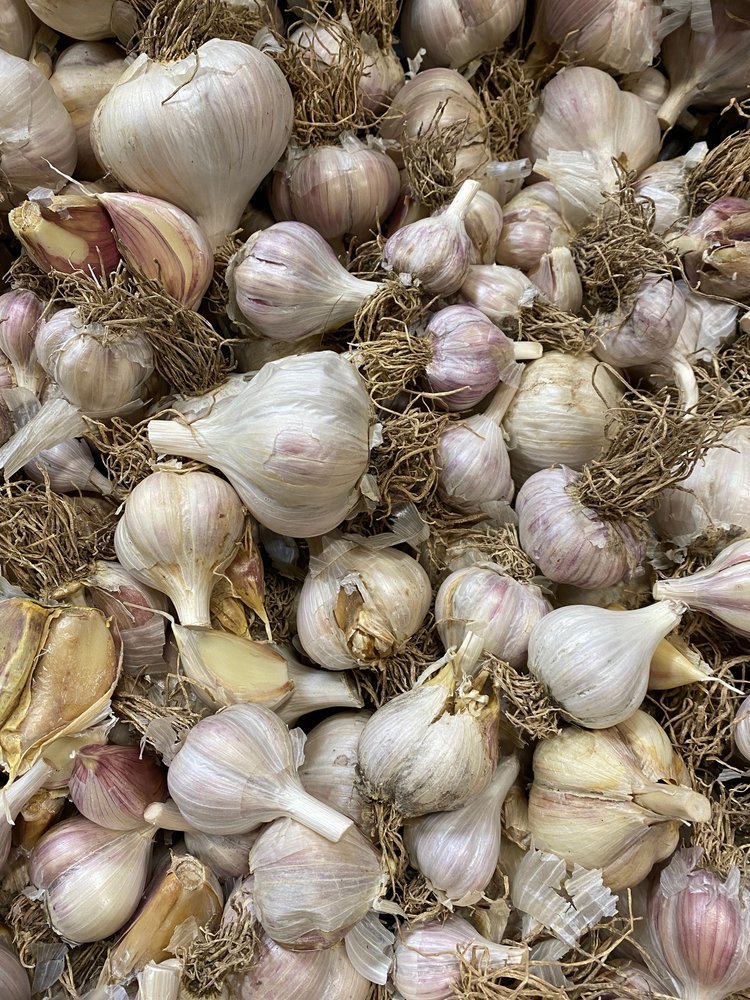There are a few crops, like garlic and parsnip, that you can overwinter in Wisconsin’s climate to get a head start on the next season. This week before Thanksgiving, we will be breaking up much of the garlic bulbs we grew last year and planting the cloves in the ground. Since that’s on our minds, we thought it would be a good opportunity to share some tips for home garlic growing.
When to Plant
The best time to plant garlic is between September and the end of November. I like to plant late when I won’t have to worry about weeds, and it will be the last field work of the season. But if you don’t have to worry about weeding a one-hundred foot bed, you can plant earlier and help the garlic establish a bit more before it goes dormant for winter.
Alternatively, you can plant in early spring and still develop great, albeit slightly smaller, garlic by harvest time.
Where to Plant
You’ll want a space that gets a good 6-8 hours of sun in the growing period, and a raised bed or a well tilled or broken up patch of ground with a little compost added.
Where to Get Seed Garlic
You can use garlic from the supermarket, but it may be treated for shelf life which could affect growth. It also may be a variety less than ideal for growing in the area.
Garlic from a local farmer’s market is most likely going to be grown locally, and so a good variety for you, and is probably not going to be treated in any way for storage.
If you really know what variety you want to try, you can look through the many seed catalogues online, like Johnny’s, Fadco, Seed Saver, etc.
How to Plant
I usually just take a clove, make sure the pointy end is pointed towards the sky, and shove it about three inches into the ground, and cover. Tilling or working up the ground right before this makes it very easy to get the clove in the ground. And if planting in the spring, wait until the soil thaws and drains some of the moisture.
I space the plantings about every five inches in rows about the same distance from one another.
After that, we will cover the beds with a generous layer of straw mulch. Some people wait until after the ground freezes to mulch, but we do it right after since we are planting late in the season. That mulch will also be nice for keeping down the early weeds in spring.
Maintaining Your Garlic
Garlic is nice and low maintenance. It helps to water regularly in May and June when most of the bulb growth takes place, but after that, natural rainfall should be adequate. Weed regularly, mostly for your own sake so when it comes time to harvest, you aren’t wading through a forest of weeds to find the garlic.
Harvesting Garlic
We usually end up harvesting our garlic in mid to late August when the leaves are browning, and the leaves are what you will want to pay more attention to than the calendar. Get the soil around the bulbs loose, and carefully dig or pull the bulb out, knocking some of the dirt from the roots.
You store them somewhere cool and out of the sun for a couple weeks, then chop off the stem. And now you can start the entire cycle over again, but now you’ve grown your own seed. Pure profit from here on out!
Written by Matt Friauf, Nourish Farm and Facilities Coordinator



